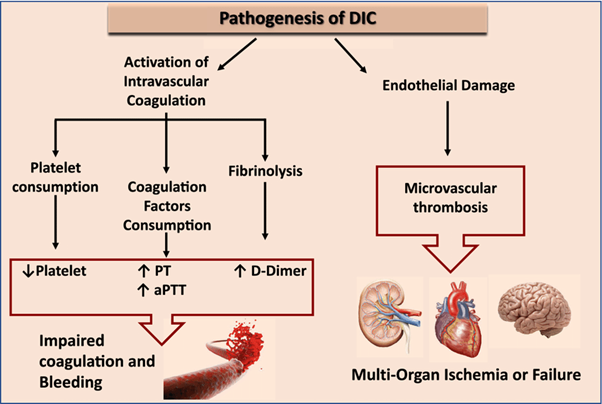A 27-year-old male patient who has been involved in a motor vehicle crash is admitted to the emergency department with cool, clammy skin, tachypnoea, tachycardia, and hypotension. All of these orders are written. Which one will the nurse act on first?
Place the patient on a continuous cardiac monitor.
Administer oxygen at 100% per non-rebreather mask.
Insert two 14-gauge IV catheters.
Draw blood to type and crossmatch for transfusions.
The Correct Answer is B
In this scenario, the patient's signs and symptoms suggest a state of shock, which can be caused by various factors, such as hypovolemia, cardiac dysfunction, or systemic vasodilation. The first priority in managing a patient in shock is to ensure adequate oxygenation and tissue perfusion. Administering oxygen at 100% per non-rebreather mask helps improve oxygen delivery to the tissues and supports vital organ function.
A. Placing the patient on a continuous cardiac monitor in (option A) is incorrect because it is an important step to monitor the patient's heart rhythm and identify any abnormalities. However, providing oxygen should take priority to address the potential hypoxemia and tissue hypoperfusion.
C. Inserting two 14-gauge IV catheters in (option C) is incorrect because it is crucial for establishing large-bore access for fluid resuscitation and medication administration. While it is an important step, addressing oxygenation takes precedence.
D. Drawing blood to type and crossmatch for transfusions in (option D) is incorrect because it is an important step in managing a patient in shock who may require blood products. However, ensuring adequate oxygenation through oxygen administration is the immediate priority.
Therefore, the nurse should act first on the order to administer oxygen at 100% per non-rebreather mask to support the patient's oxygenation and tissue perfusion.
Nursing Test Bank
Naxlex Comprehensive Predictor Exams
Related Questions
Correct Answer is B
Explanation
Disseminated Intravascular Coagulation (DIC) is a condition characterized by widespread activation of the coagulation system, leading to both excessive clot formation and consumption of clotting factors and platelets. This process can result in both bleeding and thrombosis.
The manifestations mentioned in option B are commonly seen in DIC:
Decreased platelet counts: DIC leads to platelet consumption and destruction, resulting in low platelet counts (thrombocytopenia).
Increased D-dimer: D-dimer is a fibrin degradation product, and its levels are increased DIC due to the breakdown of fibrin clots.
Increased prothrombin time (PT): DIC can lead to the depletion of clotting factors, resulting in prolonged prothrombin time, indicating impaired coagulation.
The other options mentioned do not represent the typical clinical manifestations of DIC:
A. Decreased hematocrit, increased platelet counts, and increased D-dimer in (option A) are incorrect because While platelet counts and D-dimer are increased in DIC, decreased hematocrit is not a characteristic finding.
C. Decreased Antithrombin III, increased platelet counts, and increased fibrinogen in (option C) is incorrect because: Decreased Antithrombin III can be seen in DIC, but increased platelet counts and fibrinogen levels are not specific to DIC.
D. Decreased D-dimer, increased platelet counts, and increased hemoglobin in (option D) is incorrect because Decreased D-dimer and increased hemoglobin are not typical findings in DIC, while increased platelet counts can be seen in some cases.

Correct Answer is C
Explanation
Urine output is an essential indicator of renal perfusion and overall fluid status. In a patient in shock, maintaining an adequate urine output is a crucial goal of fluid resuscitation. A urine output of 0.5 to 1 mL/kg/hour is generally considered adequate in adults. The given value of 35 ml over the last hour suggests that the patient is producing urine, which indicates that fluid resuscitation is effective in restoring perfusion to the kidneys.
A. The patient's mean arterial pressure (MAP) is 50 mm Hg in (option A) is incorrect because While mean arterial pressure is an important hemodynamic parameter, a single value alone may not provide a comprehensive assessment of the patient's response to fluid resuscitation.
B. The patient's GCS score is 9 in (option B) is incorrect because The Glasgow Coma Scale (GCS) assesses the level of consciousness and neurological function but does not directly reflect fluid resuscitation effectiveness.
D. The patient's hemoglobin is within normal limits: (option D) is incorrect because Haemoglobin levels are important for assessing oxygen-carrying capacity but do not directly indicate the effectiveness of fluid resuscitation.
Therefore, the nurse can evaluate that fluid resuscitation for a 70 kg patient in shock is effective by observing a urine output of 35 ml over the last hour.
Whether you are a student looking to ace your exams or a practicing nurse seeking to enhance your expertise , our nursing education contents will empower you with the confidence and competence to make a difference in the lives of patients and become a respected leader in the healthcare field.
Visit Naxlex, invest in your future and unlock endless possibilities with our unparalleled nursing education contents today
Report Wrong Answer on the Current Question
Do you disagree with the answer? If yes, what is your expected answer? Explain.
Kindly be descriptive with the issue you are facing.
